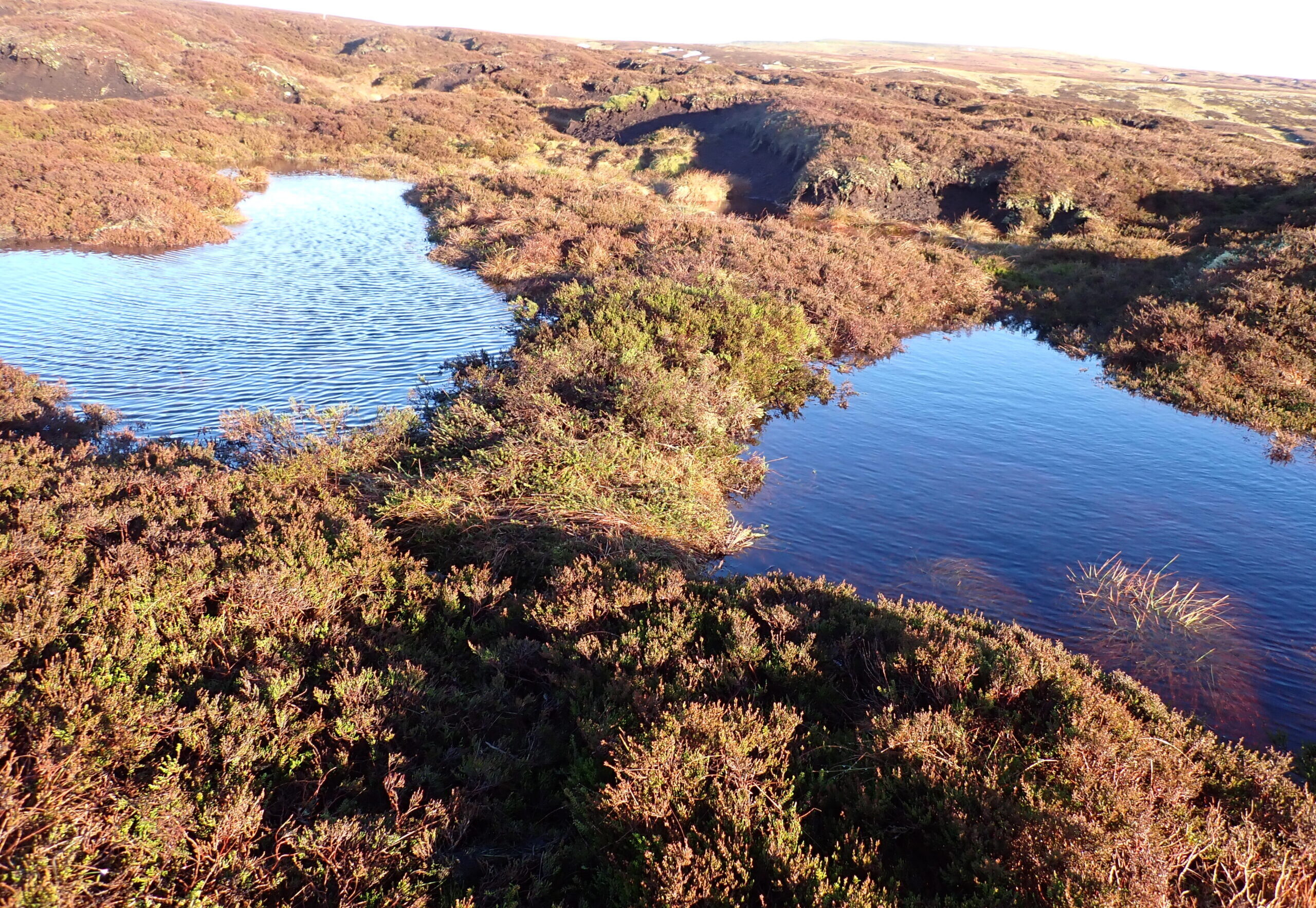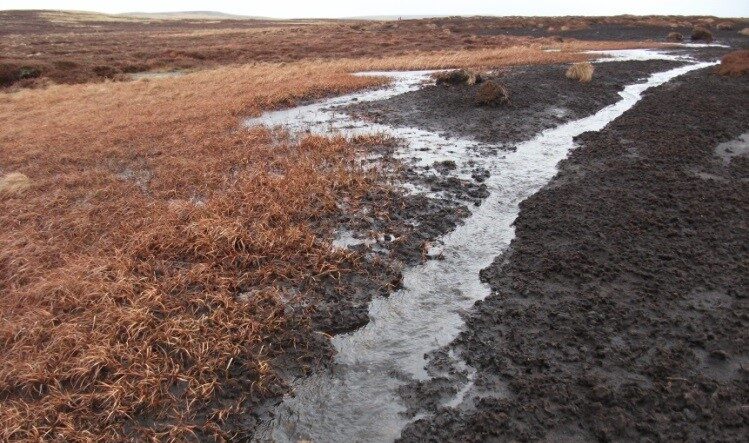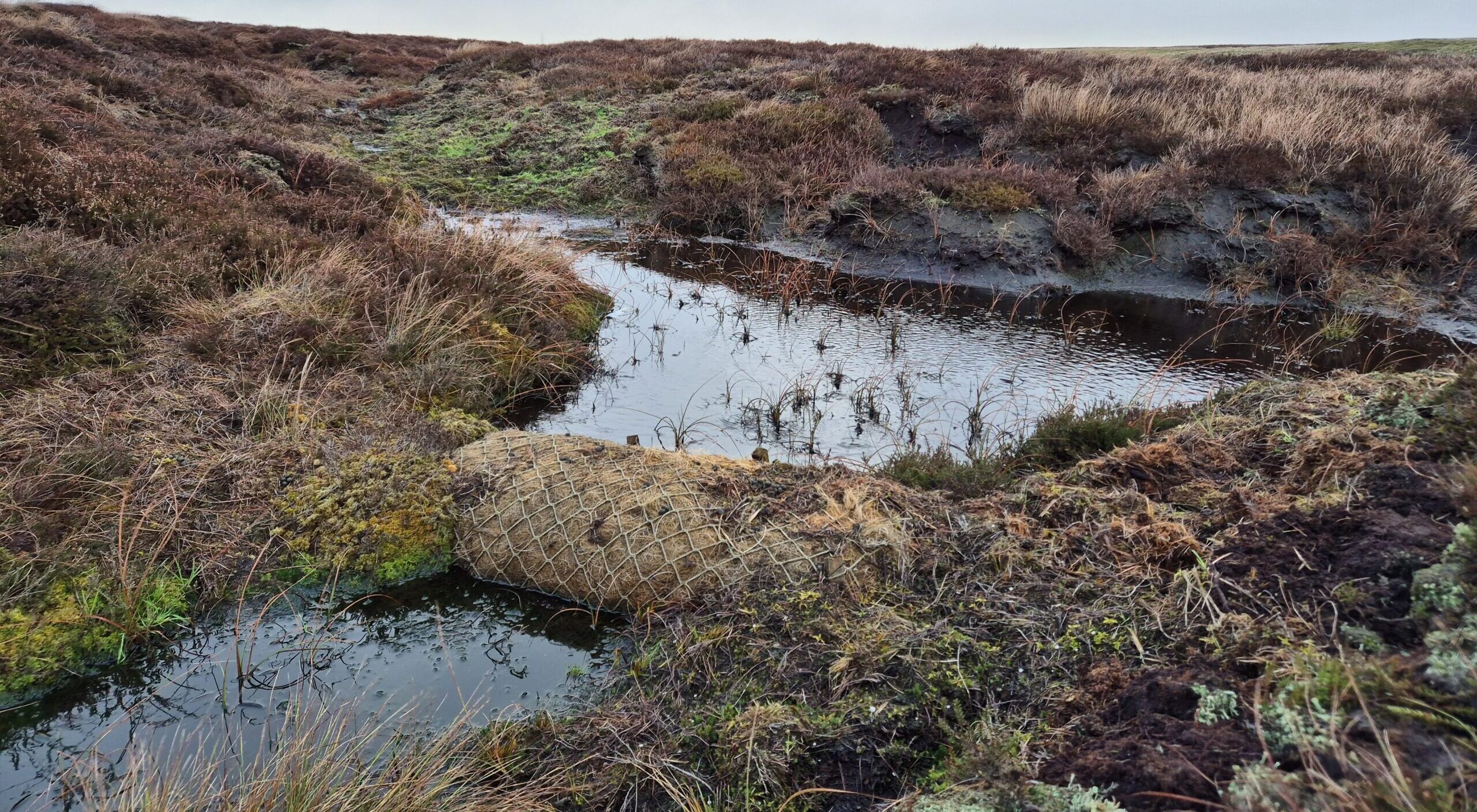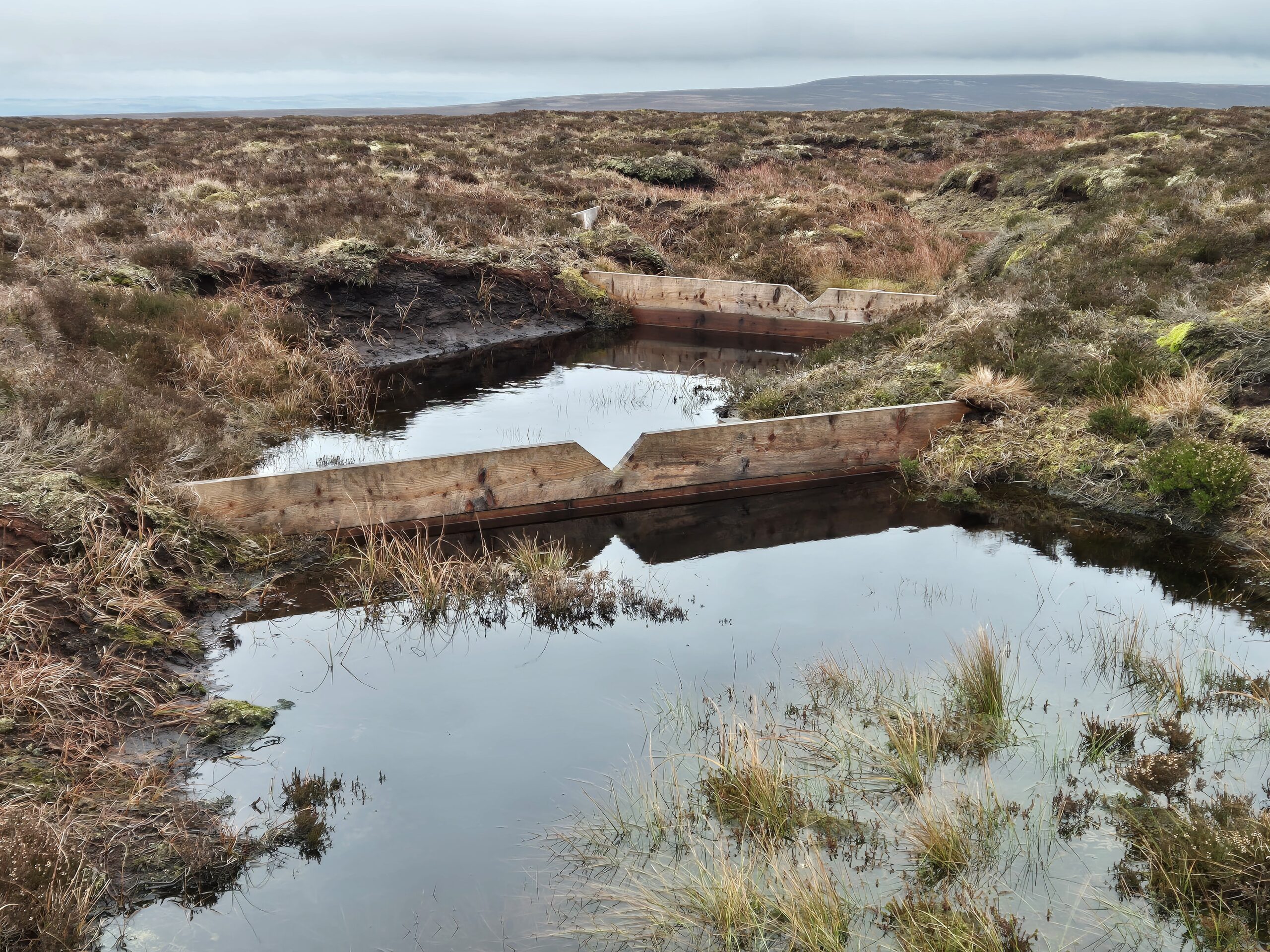What we do
The team uses a variety of techniques, also referred to as restoration interventions, to block drainage channels and gullies. These include:
Peat dams
If there is sufficient peat on site and if the gully is accessible to a digger, peat can be taken from within the gully or areas nearby on the peatland known as, ‘borrow pits’. This peat is then used to build the dam within the gully. The dam is then covered with vegetation to prevent further erosion.
A gully is a channel made from erosion caused by water. Gullies can be varying shapes and sizes.
Coir rolls
These are used on drainage channels with a gentle gradient, to slow the flow of water and gather sediment. There needs to be a sufficient peat depth to fix the coir rolls in place and to stop water eroding the peat underneath.
Stone dams
These are used on larger and/or steeper gullies, or gullies that have eroded down to the mineral layer. Stone is flown up by helicopter and dropped in the gully before being arranged into shape.
Wooden dams
These are used when there is still peat in the bottom of the gully. They slow the flow of water, particularly during high rainfall. Wooden dams are leaky dams, which means they let some water through once it reaches a certain level. They are constructed using hard wood planks and fencing posts.






